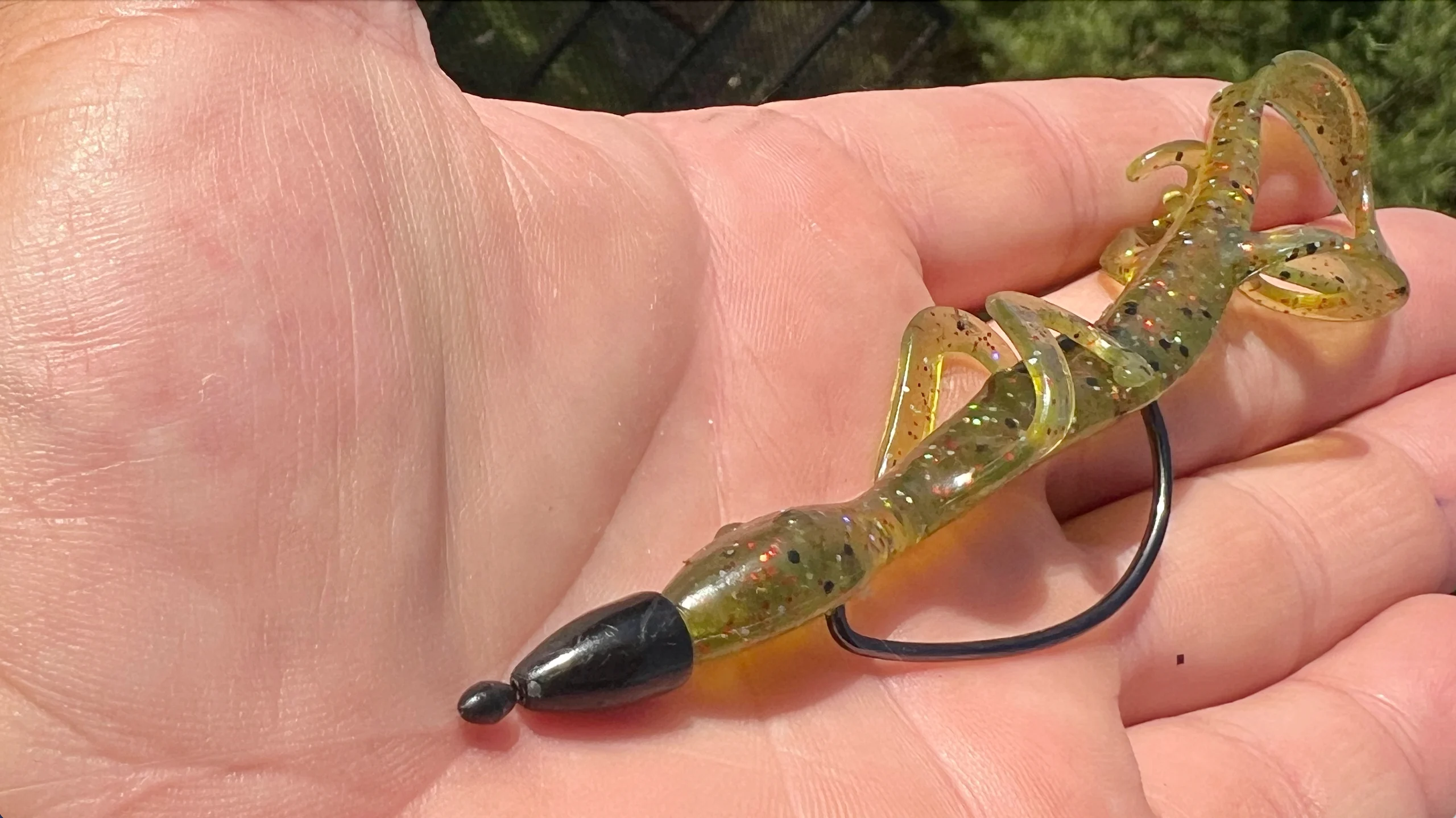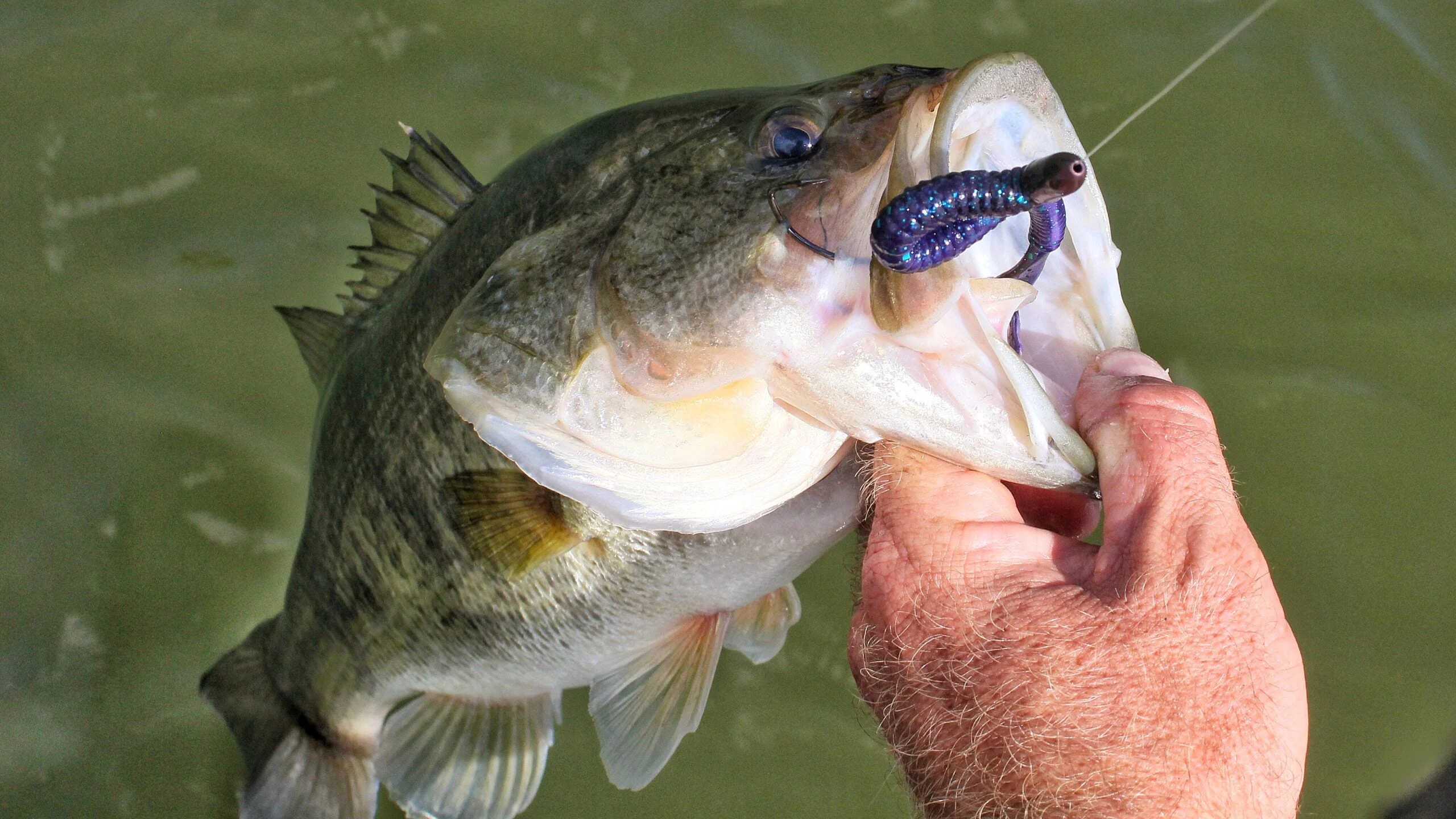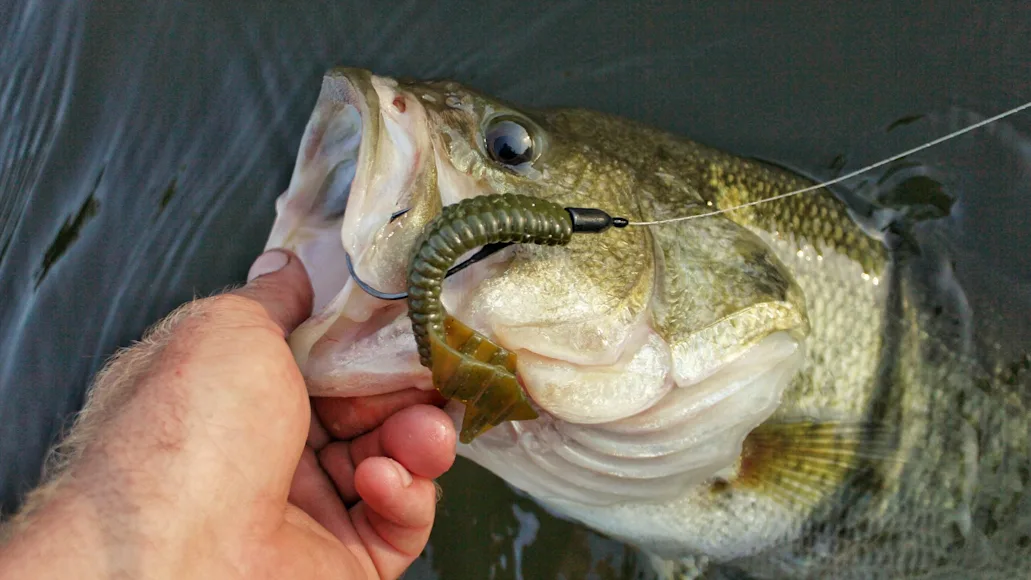We may earn revenue from the products available on this page and participate in affiliate programs. Learn more ›
There’s no rigging style bass anglers rely on more than the classic Texas rig, and the reason for this is simple: Texas rig fishing for bass is both incredibly effective and versatile. A Texas rig gives you a shallow-water, go-to presentation for power fishing around cover, but it’s also a great rig for slightly more finesse-style fishing in 10- to 15-feet of water around submerged cover, like brush piles and rock. In these situations, you just cast the bait out and drag it in. Around the shallow cover, convert those casts to short pitches, and you’ll be catching fish on a Texas rig in no time.
But first, you need to know what a Texas rig is, how to rig it right, and how to work it for the best results. And so, here is your basic guide to Texas rig fishing for bass, including a step-by-step rigging video.
Texas Rig Fishing for Bass: Table of Contents
What Is a Texas Rig?
How to Texas Rig Plastic Baits, Step-By-Step
When and Where a Texas Rig Works Best for Bass
How to Catch Bass With This Classic Rig
Frequently Asked Questions
What Is a Texas Rig?

A Texas rig consists of a bullet weight, a worm hook, and a soft-plastic lure. This rig is meant to be fished primarily around cover in less than 10 feet of water. You can pitch it, flip it, or skip it. You can also cast it, and then drag the rig along the bottom or hop it up and down. For as many ways as there are to fish a Texas rig, there are even more plastic baits you can pair it with, including worms and creature baits of just about every shape and size.
How to Texas Rig Plastic Baits, Step-By-Step
Before you start Texas rigging any bait, you’ll need to decide if you want your weight to slide freely up and down the line or be held in place close to your bait. A traditional Texas rig has a free-moving weight, but anglers have found that this rig is a little more weedless when the weight is held in position, and it also skips far easier this way. Once you’ve got that decided, proceed as follows:
Step 1: If you want your weight to be held in place, start by slipping a bobber stop onto your line. If you want your weight to move freely, simply eliminate this step.
Step 2: Slide your weight on next, going through the pointed end of your bullet weight first. (These bullet-shaped weights help make the rig weedless, as the point slides through and over cover.)
Step 3: Below the weight, tie on the hook. Offset-shank worm hooks are the gold standard for this technique when fishing with thinner baits, like finesse worms and lizards. Extra Wide Gap (EWG) hooks work better with creature baits and other thicker lures. Finally, straight shank hooks work really well when flipping and pitching Texas rigs.
Step 4: Run the hook point through the nose of the soft-plastic bait and out of the bottom of it. You want to insert the point just far enough so the section of bait you passed through will cover the hook eye and knot once you slide the bait in place. (See the video.)
Step 5: Slide the head of your bait up the hook until it is in place and covering the eye and knot.
Step 6: Pinch the midsection of the soft-plastic bait and put a slight bend in its back as you run the hook point through its midsection. Done correctly, the bait should lie straight. If it doesn’t, remove the hook point and repeat this process until the bait is straight, with the hook point all the way through the back of the bait.
Step 7: Once the bait is lying straight, slip the point just under the skin of the back of your bait to make the rig weedless.
When and Where a Texas Rig Works Best for Bass
Texas rig fishing works year-round throughout a range of depths and around all sorts of cover. It even works in open water around little to no cover at all. The Texas rig’s versatility has long made it a great choice for beginners, and its effectiveness has kept it in the hands of even the most skilled anglers.
Though there is no best time to use this rig, there are a few situations when it shines a little brighter. When fishing around shallow vegetation, docks, and wood, for example, a light Texas rig with a 3/8- to 1/2-ounce weight rigged with a 4/0 hook and a creature bait can be absolutely killer in winter, spring, summer, and fall.
How to Catch Bass With This Classic Rig

Pitch or cast a Texas rig out, work it through the cover by dragging and hopping it along, and get ready for a thump. Most of the time, you’ll feel a very pronounced bite. That said, there are times when the fish will hit the bait on the fall, and you’ll simply notice the bass swimming with it when you engage your reel—or it will feel like the bait never hit the bottom.
When you notice any of these, drop your rod a little and reel down quickly, then set the hook hard. You’ll need some force to get the hook through the bait and into the fish’s mouth. It’s best to use fairly heavy gear when fishing a Texas rig in and around shallow cover, so you can get the fish out of the cover and haul them on into the boat. A 7-foot heavy-action or a 7-foot, 3-inch medium-heavy rod will work well, paired with a strong reel in the 7:1 gear ratio spooled with 17-pound fluorocarbon or even 30-pound braided line.
When Texas rig fishing a little deeper, you can lighten up on the gear, moving towards a 7-foot to 7-foot, 6-inch medium-heavy action baitcasting rod and 15-pound fluorocarbon line. Fluoro works best with a Texas rig since it sinks and is clear, unless you’re fishing around particularly shallow, thick cover. Then, you’ll want to go with 30 pound or heavier braided line on a heavy-action rod.
If you’re an angler just getting into bass fishing, a Texas rig is a great place to start, as it gives you one fairly simple setup that can be fished in many situations. But no matter how experienced or skilled you get, you’ll continue to rely on Texas rig fishing for one simple reason—because you’ll keep catching bass with it.
Frequently Asked Questions
Q: Is a Carolina or Texas rig better for bass fishing?
That depends on the situation. Texas rig fishing is generally better for bass in relatively shallow water and around cover. Carolina rig fishing tends to work better after the spawn when bass are deeper (more than 10 feet) and relating to a cleaner bottom.
Q: What is the best bait for bass with a Texas rig?
The classic bait is a soft-plastic worm, but these days folks are Texas-rigging all sorts of soft-plastics from stickbaits and finesse worms to swimbaits and creature baits of every description.
Q: When should you fish a Texas Rig?
You can fish a Texas rig anytime from the pre-spawn, through the post-spawn, and into summer and fall—whenever fish are in relatively shallow water and around cover. That said, Texas rig fishing really heats up just before, during, and after the spawn.


